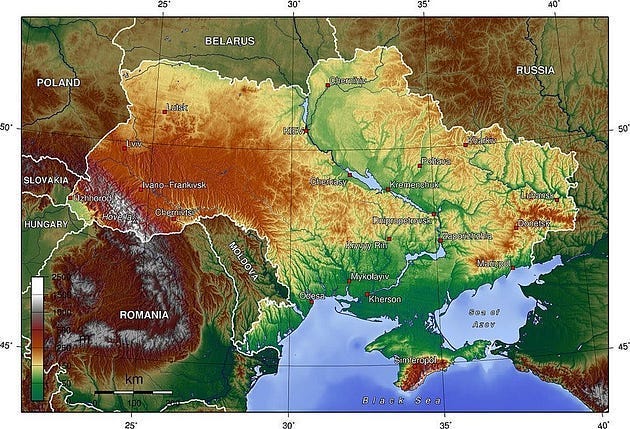How Ukraine's Geography Shapes Its Economic Potential
From Attila to Putin: Ukraine's Geopolitical Crossroads
Why Ukraine Matters Beyond Its Borders
Zbigniew Brzezinski wrote in The Grand Chessboard (1997): “Ukraine, a new and important space on the Eurasian chessboard, is a geopolitical pivot because its very existence as an independent country helps to transform Russia. Without Ukraine, Russia ceases to be a Eurasian empire.”
As the saying goes, Russia with Ukraine is a superpower, but not without it. Geography alone doesn’t decide the fate of nations, but it defines their potential. Ukraine’s geography is a paradox: a land rich in ports, rivers, farmland, and minerals, yet one that has rarely enjoyed the stability to turn these assets into lasting power. Other nations, like Singapore, show how leadership can transform even limited geography into global strength — a lesson Ukraine could follow.
Today, as the war enters its fourth year, Ukraine’s fight is for both sovereignty and the right to direct its own economic destiny.
Geography’s blessing and curse
As British geographer Halford Mackinder argued in 1904, “Who rules East Europe commands the Heartland; who rules the Heartland commands the World Island; who rules the World Island commands the world.” Ukraine lies on the western edge of this “Heartland,” where Eurasia’s resources and trade routes converge — a prize and battleground for centuries.
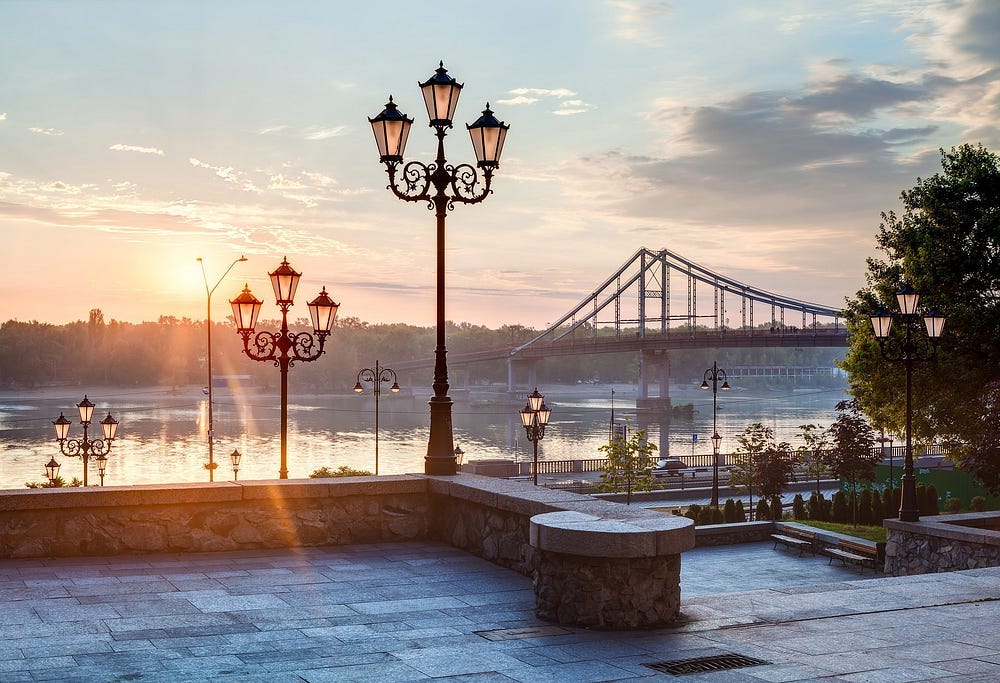
A historical crossroads
Ukraine’s fate is shaped by its position between the Eurasian steppe and Europe’s heartland. Flat, fertile, and open, it has long been a corridor for traders, armies, and empires:
Attila the Hun swept through in the 5th century.
Goths and other tribes used it as a staging ground.
Turks and Tatars raided from the Black Sea coasts.
Hitler invaded in 1941 for its farmland, Europe’s “breadbasket.”
Stalin collectivized agriculture, using grain as weapon and pride.
In 2022, Putin launched a full-scale invasion to pull Ukraine into Moscow’s orbit — a moment many see as the return of history.
The war’s outcome remains uncertain, clouded by the fog of war and the unpredictable forces of politics, economics, and resilience. Across these centuries, Ukraine’s geography — especially its fertile soil, warm-water ports, and river systems — has made it worth taking. But the same openness that made it valuable has also made it hard to defend.
Ports: Ukraine’s maritime lifelines
Ukraine’s economic reach hinges on its ports — Odesa, Mykolaiv, Kherson, Mariupol, and Sevastopol — long gateways for grain, steel, and goods.
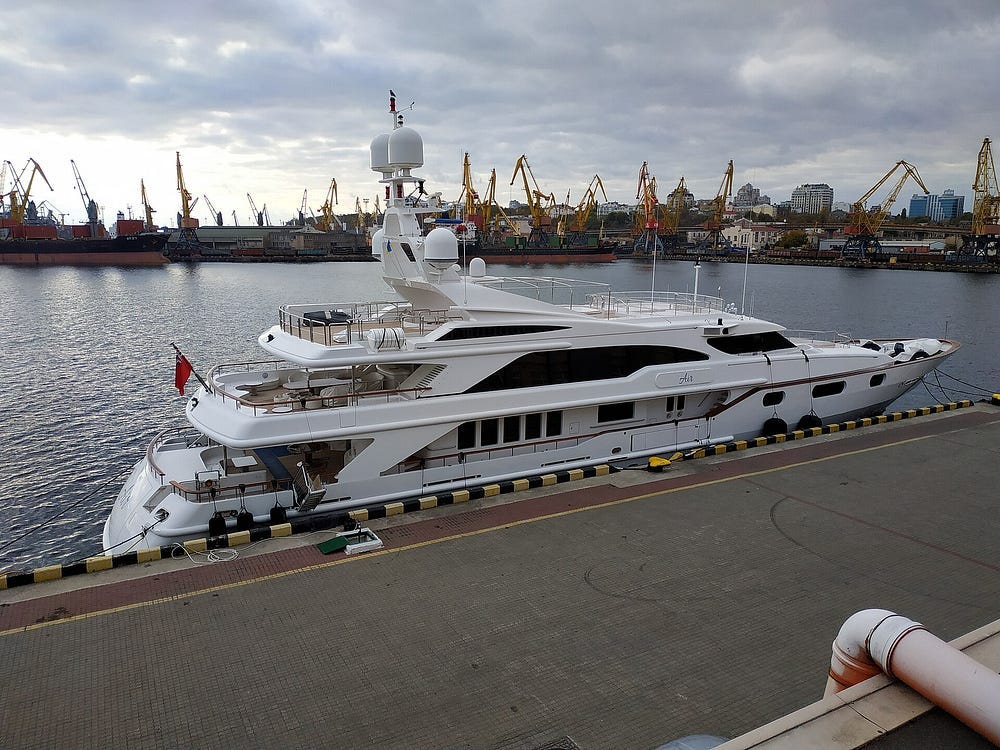
The Black Sea isn’t just a body of water — it’s a conduit to the Mediterranean, Suez Canal, and global markets.
Control of these ports is control over Ukraine’s economic oxygen. That’s why the 2023 collapse of the Black Sea Grain Initiative sent shockwaves far beyond the region, threatening food security from Egypt to Somalia.
Rivers and rails: The inland arteries
The north–south Dnieper River is both a natural barrier and a navigable trade route linking farms and factories to the sea. Historically, grain could reach Black Sea ships in days.
Ukraine’s Soviet-era rail network once tied it to Russia; new links now connect to EU gauges, shifting trade west.
Inland waterways remain one of the most energy-efficient ways to move bulk goods — a truth as relevant to Ukraine’s Dnieper as it has been to Florida’s rivers and ports. Read more in Florida’s Wealth Written in Water.
Agriculture and minerals: The breadbasket and beyond
Ukraine’s black earth ranks among the world’s richest, yielding wheat, corn, and sunflower oil.
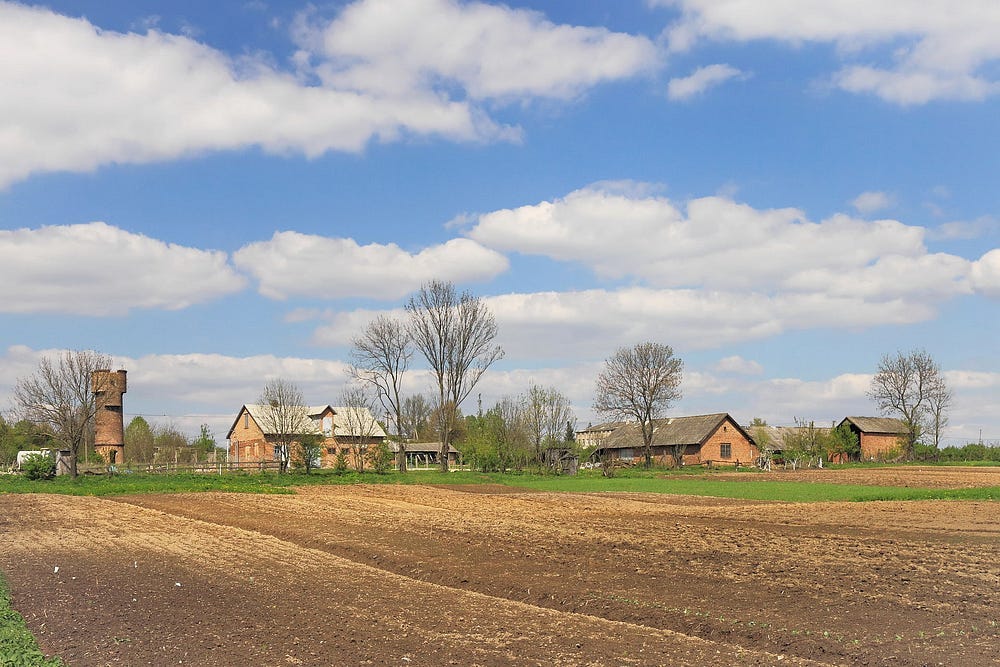
I remember a friend who had visited Ukraine telling me how the soil was so dark it looked like pure earth in her hands. That image stuck with me — land so blessed with fertility, yet so often scarred by conflict. It’s a reminder that for all Ukraine’s raw potential, its lack of defensible borders has repeatedly kept it from becoming the economic powerhouse its geography promises. This tension between rich resources and vulnerable frontiers runs through Ukraine’s history. As I explored in Ukraine’s Geography and Defendable Borders, the open plains that feed the world have also left the nation exposed to those who would take them.
Beneath its soil lie iron ore, natural gas, and rare earth minerals that could form the backbone of diversified, high-value economy.
The deeper truth
Ukraine’s geography is a double-edged sword. This paradox is visible in Ukraine’s GDP over the last three decades. Periods of stability have brought growth, but crises and wars have sent GDP plunging.
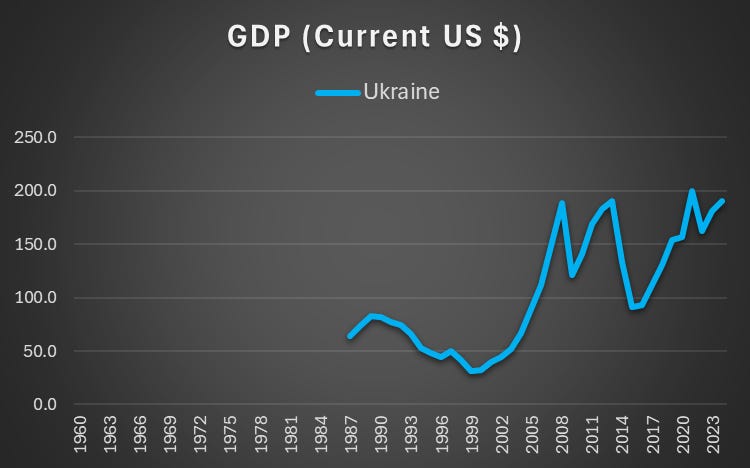
The very features that could make it a prosperous, self-reliant nation also make it a prize for others to seize. This is the essence of its blessing and curse:
Blessing: With open ports, flowing rivers, and planted fields, Ukraine could be a major logistics hub feeding millions and fueling industries worldwide.
Curse: Its openness leaves every gain vulnerable. From Attila to Putin, armies have passed through, partitioned, or plundered it.
For Russia, a Ukraine that prospers as a NATO-leaning democracy is more than a lost buffer — it showcases prosperity and independence right on its doorstep. Realists like John Mearsheimer contend NATO expansion triggered Russia’s reaction (Why the Ukraine Crisis Is the West’s Fault, 2014). Yet this focus on great-power politics misses Ukraine’s central dilemma: geography grants it vast economic potential but also traps it in a cycle of domination. Fertile soil and warm ports make it too valuable for empires to ignore — and too exposed to ever escape their reach.
That is why this war is not just about lines on a map. It is about whether Ukraine can finally break the historical cycle that has kept it from turning raw geographic potential into lasting economic power.
What We Should Take From This
The outcome in Ukraine will shape more than its own future. As Francis Fukuyama argued in 1989, liberal democracy as the “end of history” faces a stark reminder here: in 2022, history returned. The Russian bear’s invasion marked the end of Pax Americana — the post–Cold War order dominated by U.S. power — and ushered in a new era where great powers once again contest spheres of influence. This struggle is not only economic but civilizational. Russia may appear European, yet at its core it is Eurasian — a hybrid of East and West. That dual identity makes it an enigma to Europeans and helps explain why Western assumptions so often misread Moscow’s moves.
Even the dragon is watching — China measuring how the West responds and drawing its own lessons for the global order (read more in What If China Is Just Getting Started?). We are living through what the Chinese proverb calls “interesting times.” It is an age when history accelerates, assumptions collapse, and maps of power are redrawn.
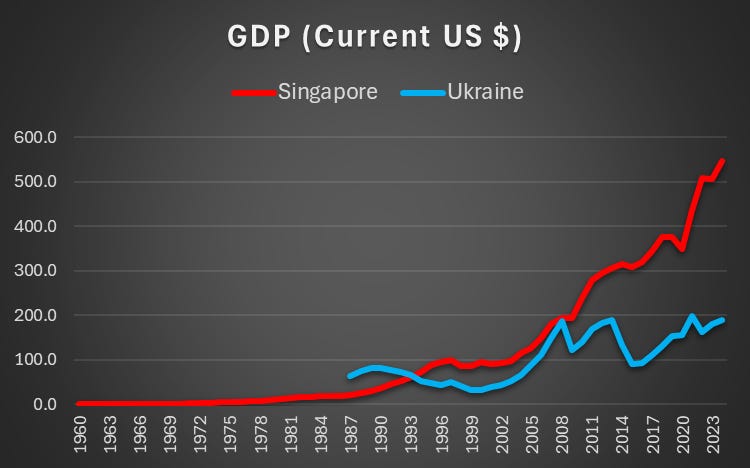
In 1987, Ukraine’s GDP per capita was higher than Singapore’s. Today, the roles are reversed many times over. Geography gave Ukraine more resources, but Singapore — resource-poor yet strategically located — used disciplined leadership, stable governance, and a culture of long-term planning to become a global hub.
Ukraine could follow a similar path by investing in infrastructure and resilience to leverage its ports and farmlands. This is why “geography is not destiny”; leadership and vision can transform even the smallest foothold into world-class prosperity. Geography is the foundation, but without leadership and a culture of stability and trust, even the most favorable location can fail to reach its potential.
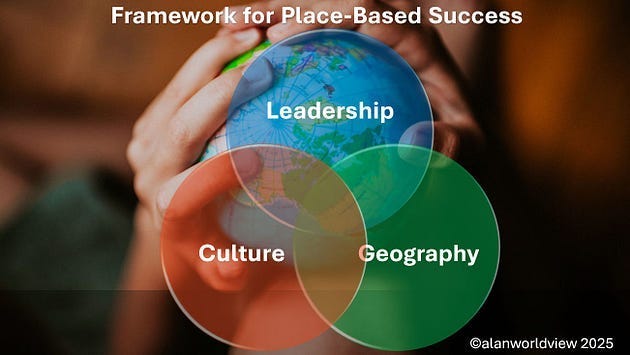
Lee Kuan Yew understood this when he turned resource-poor Singapore into one of the world’s great economic hubs by leveraging location, discipline, and long-term vision. Ukraine faces the same challenge. Read more in How Singapore Turned Geography Into Power.
Yet this war is not only about maps or economic corridors. It is also about meaning — land, borders, and belonging. Behind every statistic are millions displaced, families who have lost homes, jobs, and loved ones. Infrastructure lies in ruins, and communities remain in crisis.
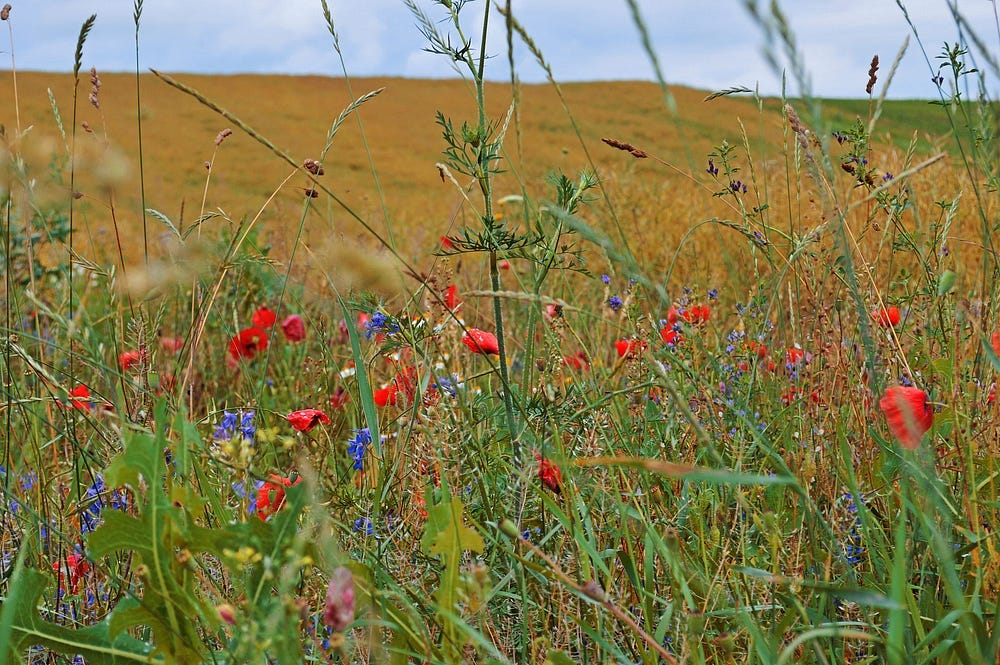
If you want to help, I encourage you to support organizations providing humanitarian aid. Groups such as World Central Kitchen, Razom for Ukraine, and UNHCR are working directly with those affected by the war. Every donation helps bring food, medical care, and shelter to those who need it most.
Disclaimer: The views expressed in this article are solely my own and do not reflect those of any public agency, employer, or affiliated organization. This blog aims to educate and empower readers through objective geographic and planning insights, fostering informed discussion on global and regional issues.

